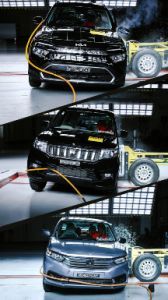 Upcoming 2024 Maruti Suzuki Dzire To Get These 5 Features Over The Current ModelUpcoming 2024 Maruti Suzuki Dzire To Get These 5 Features Over The Current Model
Upcoming 2024 Maruti Suzuki Dzire To Get These 5 Features Over The Current ModelUpcoming 2024 Maruti Suzuki Dzire To Get These 5 Features Over The Current Model
Honda City e:HEV Hybrid First Drive: Who Is It For Really?
- May 2, 2022
- Views : 3492
- 12 min read
The country’s most affordable self-charging hybrid offers a lot more than just better fuel economy
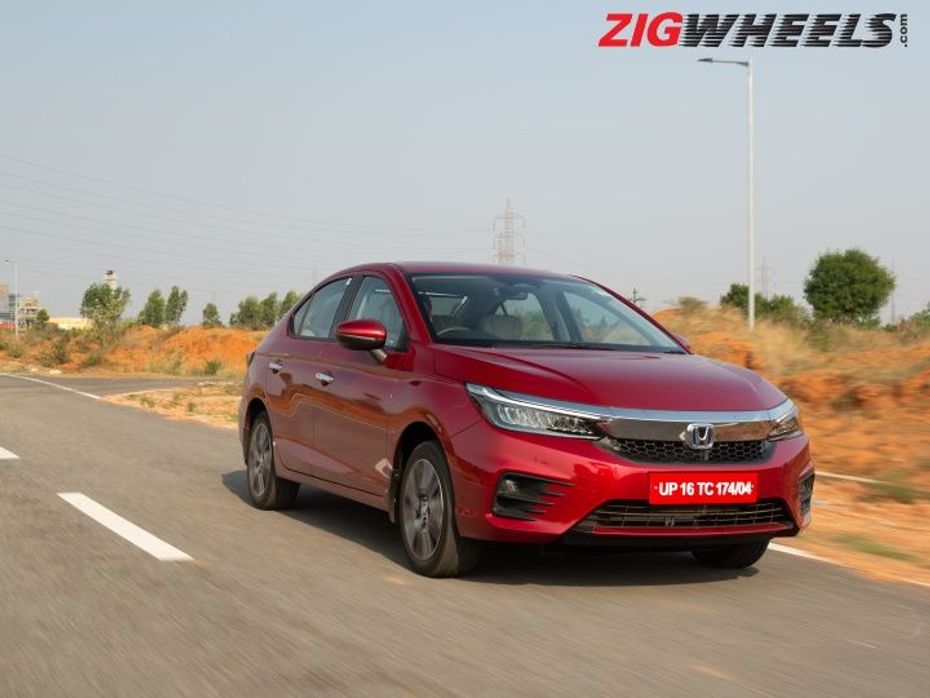
India aspires to switch to green mobility on a similar timeline as some of the world's leading nations. While mass-market EVs are still limited by choice, price and range anxiety, Honda has made the bold step of pushing its hybrid tech in India with little to no government incentives. Its latest electrified powertrain arrives in the shape of its top-selling model, the City.

The new version of the compact sedan, the City e:HEV, uses a self-charging hybrid system and even gets the addition of Advanced Driver Assistance Systems (ADAS). Let’s start by getting an understanding of how this powertrain works and then tell you how it feels out on the road.
How does this hybrid system actually work?
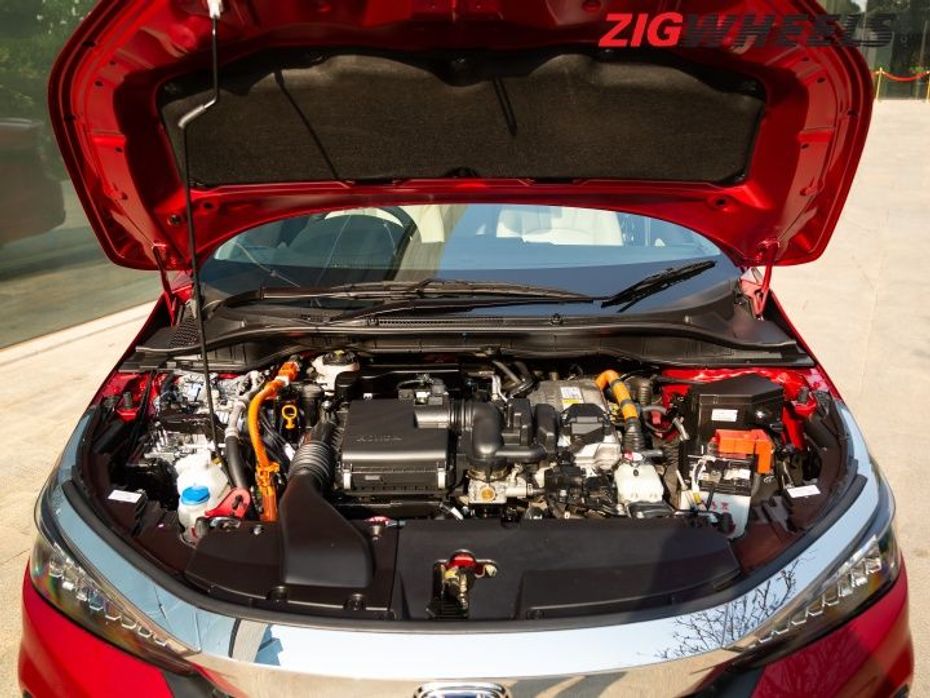
Well, a detailed explanation of the system would be a very long and complex piece in and of itself so we'll give you an abridged version with the basic information you need. As mentioned earlier, Honda's e:HEV hybrid powertrain has a 1.5-litre Atkinson Cycle petrol engine (reworked for increased energy efficiency), two motors, a clutch and a battery.
The first of the two motors in this system is an electric drive motor that is connected to the wheels and acts as the core mode of propulsion. However, the more important second motor is the generator motor which connects to everything else, i.e., the engine, the battery and the drive motor.
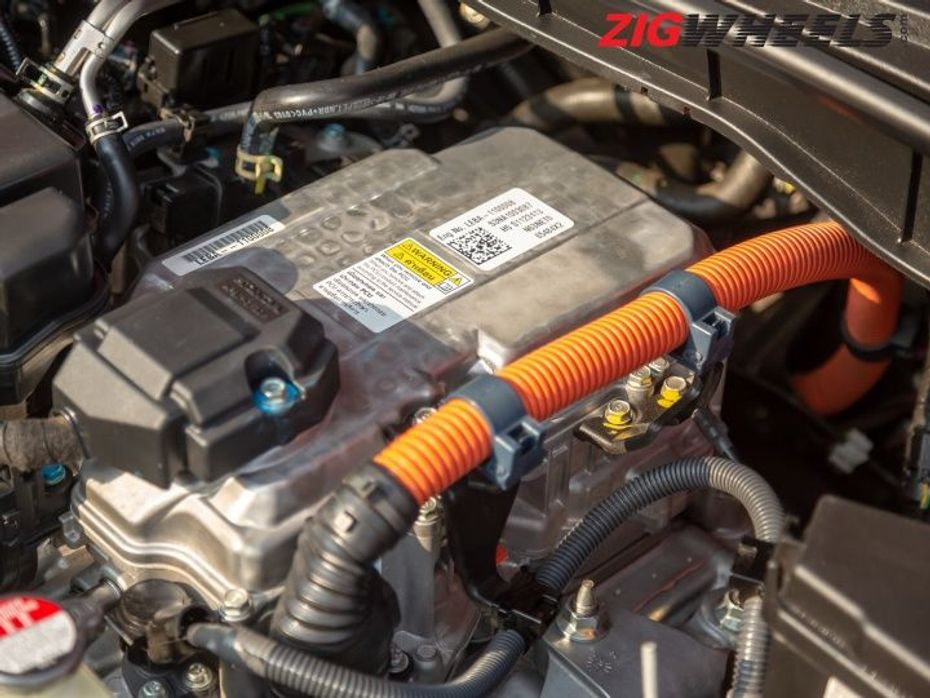
the automobile community
In hybrid mode, the 1.5L engine feeds power to the generator motor which converts it into electricity which is then sent to the drive motor. In this phase, the engine is not driving the wheels of the City but is being used to generate electricity. Simultaneously, the generator motor is transferring any excess energy from the engine that isn't needed by the electric drive motor to charge the battery. However, when the engine isn't offering enough juice to the generator motor to match the driver's throttle input, the battery feeds its charge to the electric drive motor and fills in the gaps in performance. In city use and under heavy acceleration, the City e:HEV will primarily operate in hybrid mode.
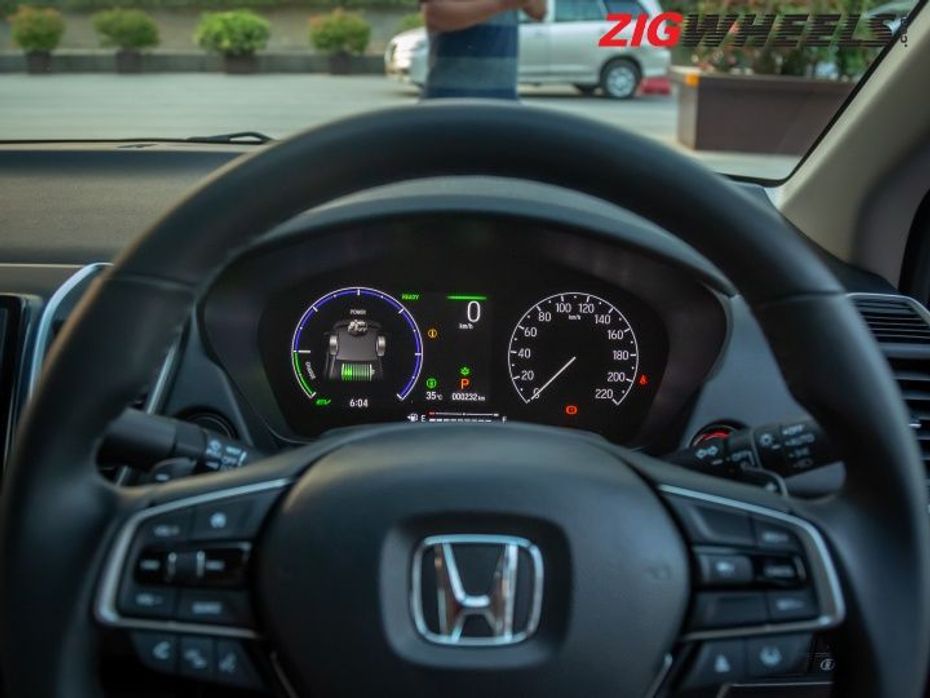
In pure EV mode, the engine automatically switches off and only the battery is used to power the electric drive motor. The City e:HEV mostly starts and sets off in EV mode, even if just for the first few metres. With enough charge, we discovered you can easily maneuver the car in and out of parking areas in pure EV mode with gentle throttle inputs. This experience on par with what an EV offers.
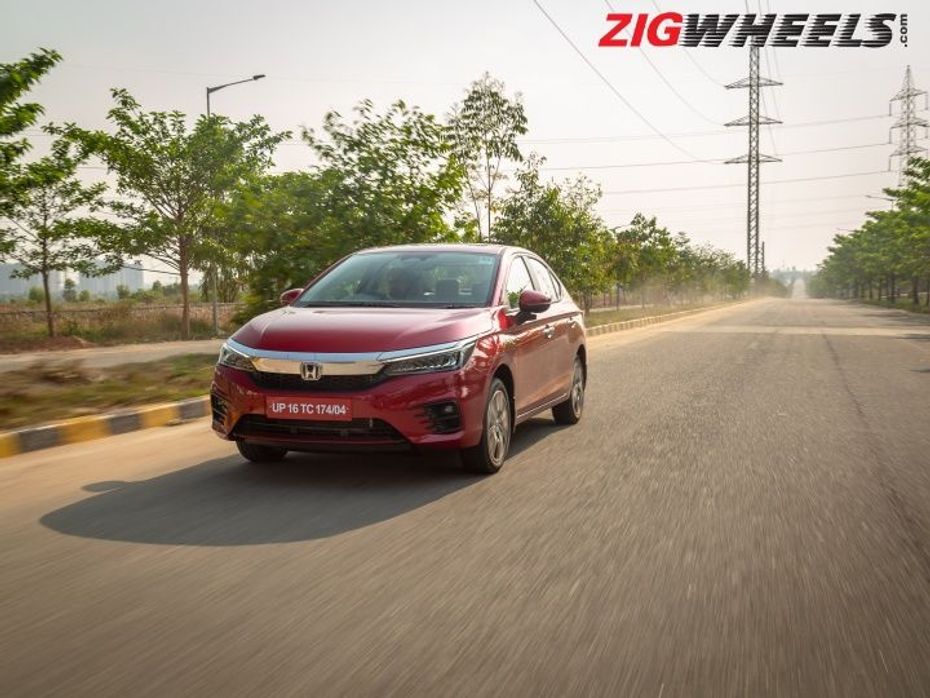
Then we have the engine-only mode which is engaged at highway speeds when the engine is operating in its optimum efficiency range. It no longer depends on electric energy to meet that requirement. At speeds of around 80 to 120kmph, the hybrid system engages the clutch that directly connects the engine to the wheels via a fixed gear ratio and cuts the motors out of the loop. You still replenish the battery when you decelerate but you are not using the electric drive motor. However, the motor can still come in support of the engine when you demand brisk acceleration for overtakes on the highway.
What is it like to drive?
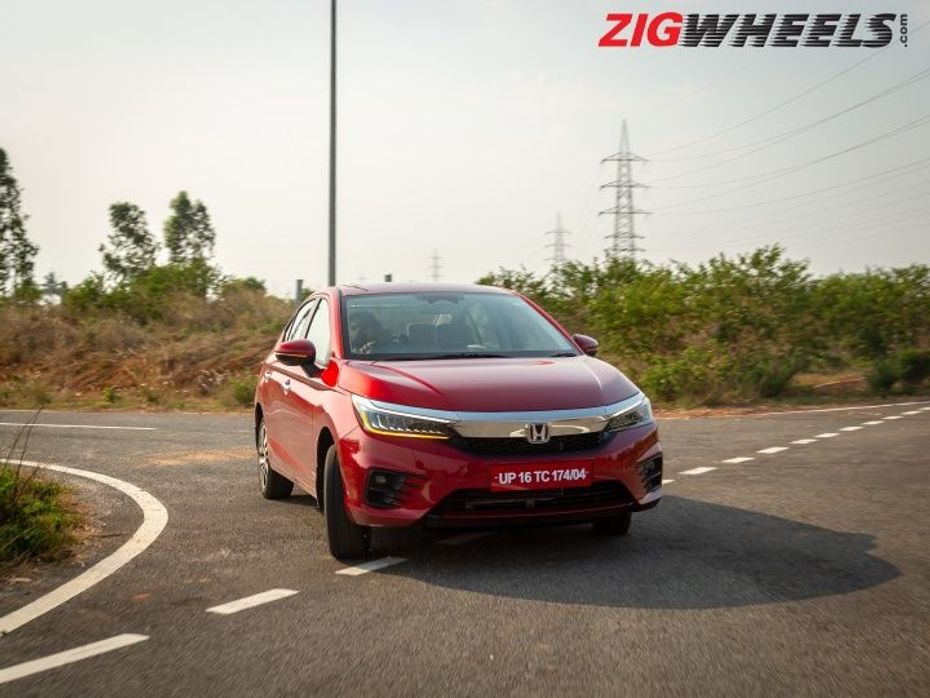
The City e:HEV is the most powerful and quickest accelerating version of the sedan you can buy from Honda. Even though the powertrain is aimed at maximum efficiency, Honda has not restrained the inherent performance available. The combined power output of the hybrid system stands at 126PS, 5PS more than the normal petrol variant. The more relevant jump in performance is the 253Nm of immediate torque from the 1.5-litre petrol engine and electric motor working together to offer serious acceleration up to triple digits with a claimed 0-100kmph time of 10 seconds. That’s nearly half a second quicker than the claimed 0-100kmph time of the petrol variant and a full 2.5 seconds quicker than the diesel City.
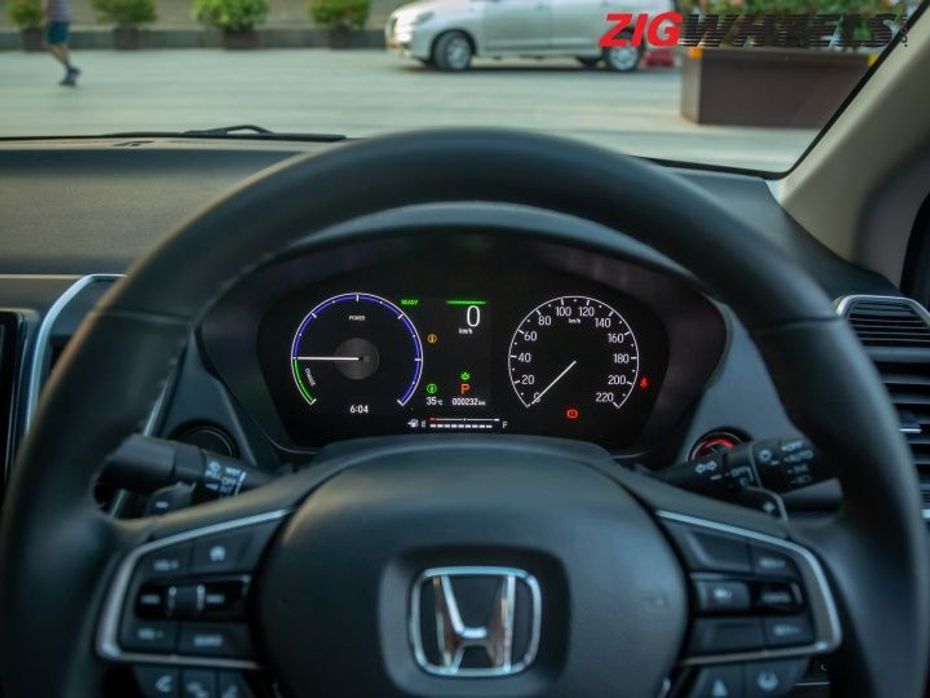
The hybrid system seamlessly switches between EV, hybrid and engine-only modes based on driver input. It starts in EV mode by default, allowing you to pull out of your parking spot silently and smoothly with soft throttle inputs. Press the pedal a little harder and you’ll feel the mild rumble of the engine turning on, signaling the switch to hybrid mode. Even in city driving, you can feel the benefit of the electrified powertrain’s faster response to your throttle inputs. It’s not as instantaneous as a pure EV but still quicker and more linear compared to a petrol or diesel powertrain with similar outputs. The enhanced performance and the lack of any gears makes driving the City e:HEV in bumper to bumper traffic effortless. If you’re stuck in slow moving traffic, or just pottering around, the car goes quiet as it switches back to EV mode.
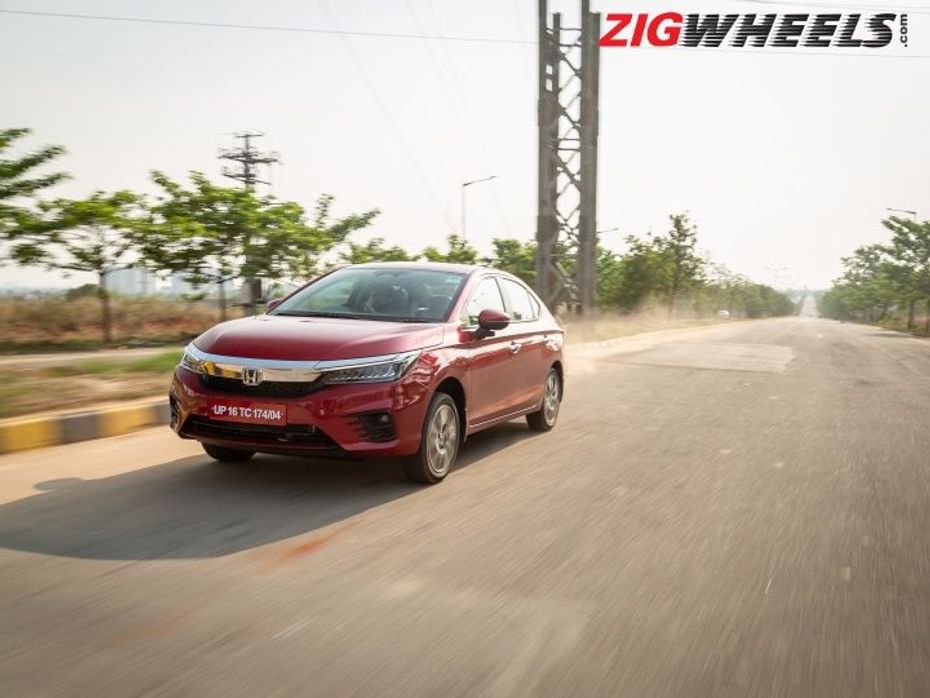
Squash the throttle to pull away from a stop light and the City pulls away with urgency. You can hear the engine revving hard to deliver the high current output your right foot is demanding from the electric motor. Everything in this hybrid setup works together seamlessly. Furthermore, Honda has been clever with the tuning of its no-gear-having e-CVT system that adds to the driving experience, especially while driving it hard. We’ll expand on this in more detail later in this review.
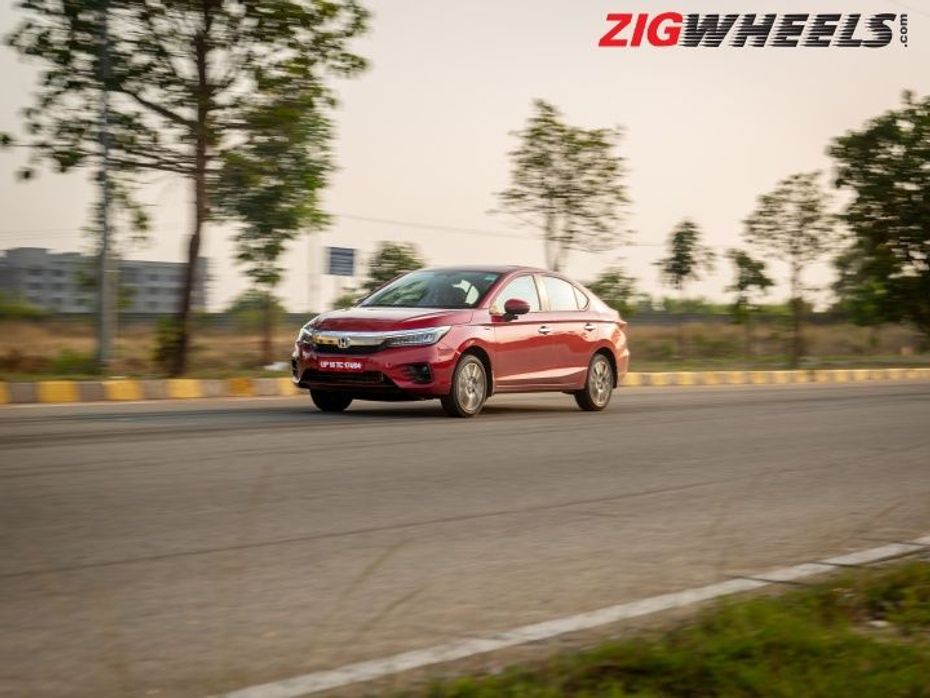
Turning onto the highway, you get up to pace with the faster moving traffic effortlessly in hybrid mode. Cruising between 80 and 120kmph, you don’t feel anything as the wheels get disconnected from the motors and start being driven by the engine instead. The hybrid system has switched to engine-only mode as the petrol-powered heart is operating at RPMs that deliver the best fuel economy. The only way to know of this change is by looking at the different animation on your TFT display in the instrument cluster. Even at this pace, overtakes are executed smoothly as the acceleration is prompt and seamless thanks to a boost from the electric bits of the hybrid system as and when required.
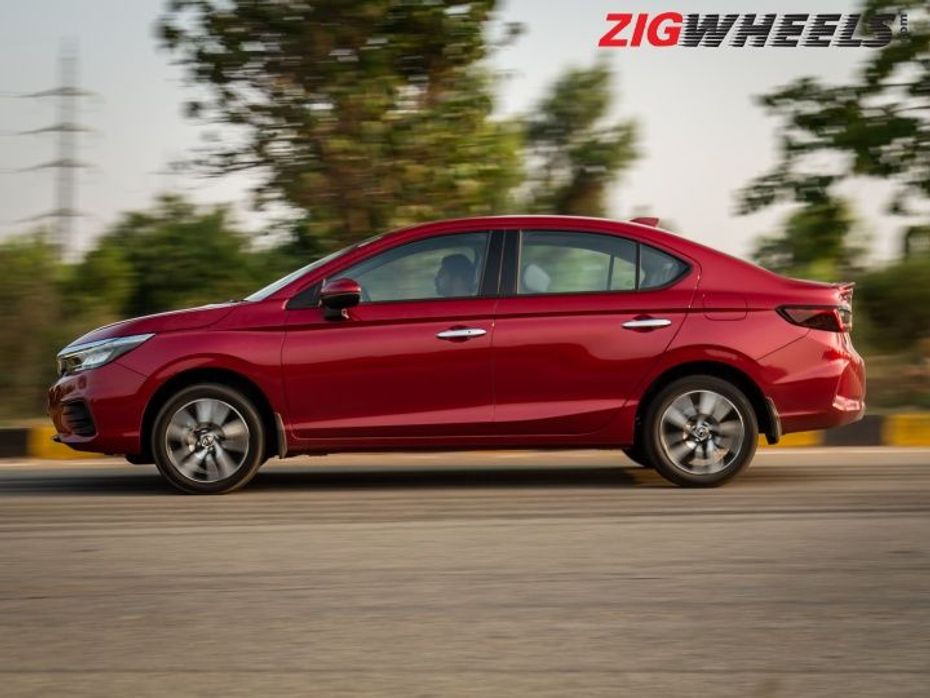
All this mode switching in different driving conditions happens immediately and seamlessly with little to no noticeable effect on the driver or the passengers. The power delivery feels effortless in all regular circumstances as it is more responsive compared to the City’s regular petrol and diesel powertrains. The technology used here certainly is complex, but it presents a car that is easier to drive.
Geared for adaptability
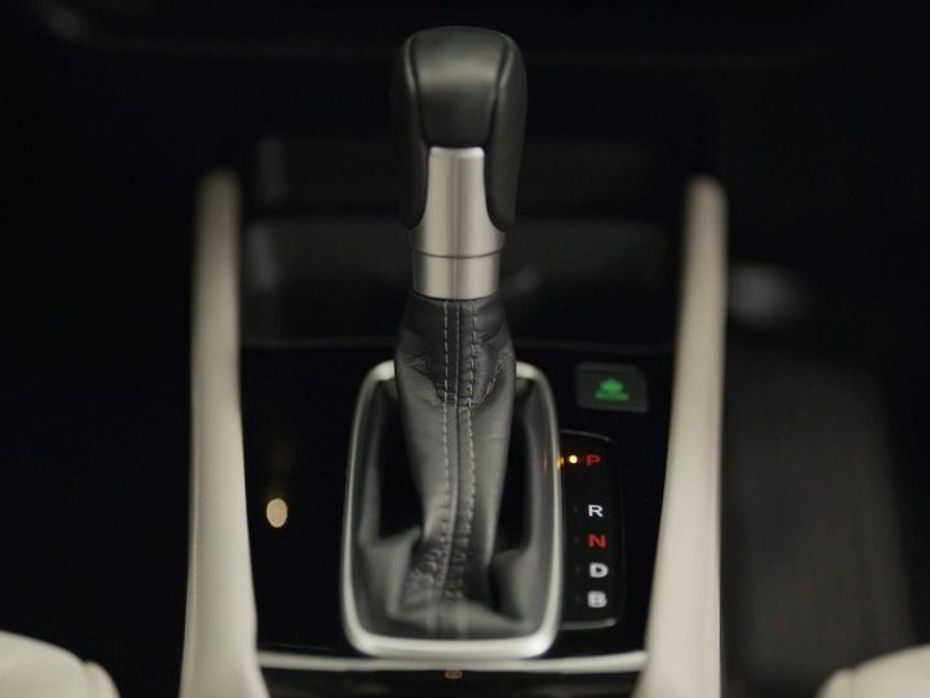
The City's hybrid powertrain does not have a conventional gearbox and hence no gears. It has what Honda calls an e-CVT which is a single-speed setup transferring power from the engine to the front axle. Like an EV, this system offers a mostly linear delivery of performance till the top-end. We mentioned earlier that Honda did something clever with its transmission? This is it. In order to avoid the engine buzzing away at higher rpms like it would with a regular CVT, the e-CVT has been tuned to mimic gear changes of a conventional petrol-automatic while accelerating. This not only offers a sense of familiarity to those new to electrified performance, but also improves driver engagement.
Does it offer one-pedal driving like an EV?
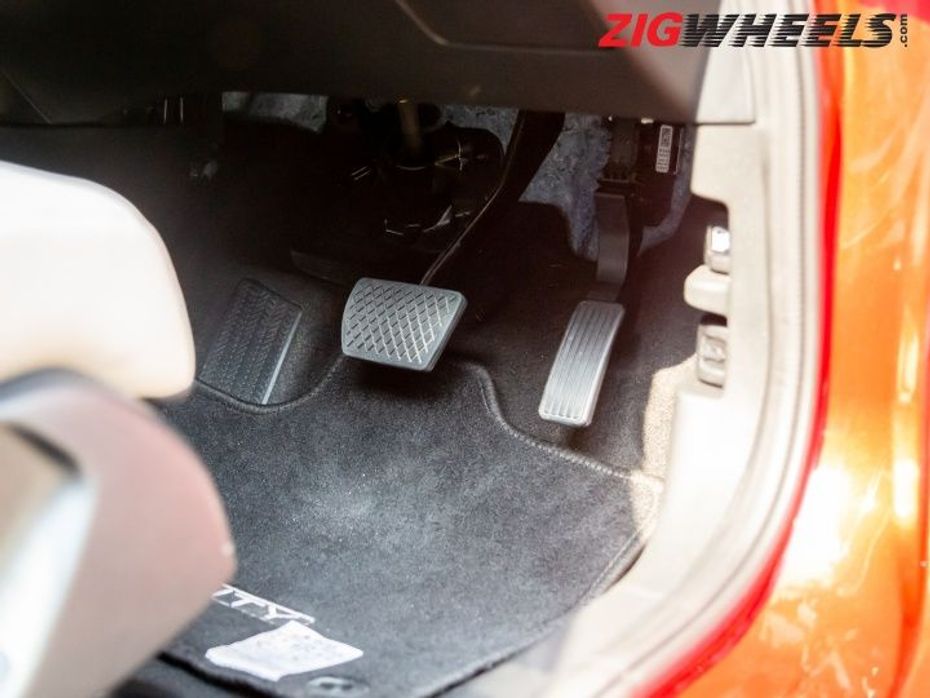
While the City e:HEV does have regenerative braking to recharge its battery, it's not as aggressive as what you might find in an EV. Since the battery is quite small, it does not need a lot of charging anyway and is better suited to deploying its energy as needed for either performance or efficiency. The braking mostly is regenerative even when you apply brakes in traffic. It’s only when you press the pedal hard for aggressive deceleration that the disc brakes actually kick in. While this sounds a bit unnerving, the application is pretty seamless and you will barely notice the difference.
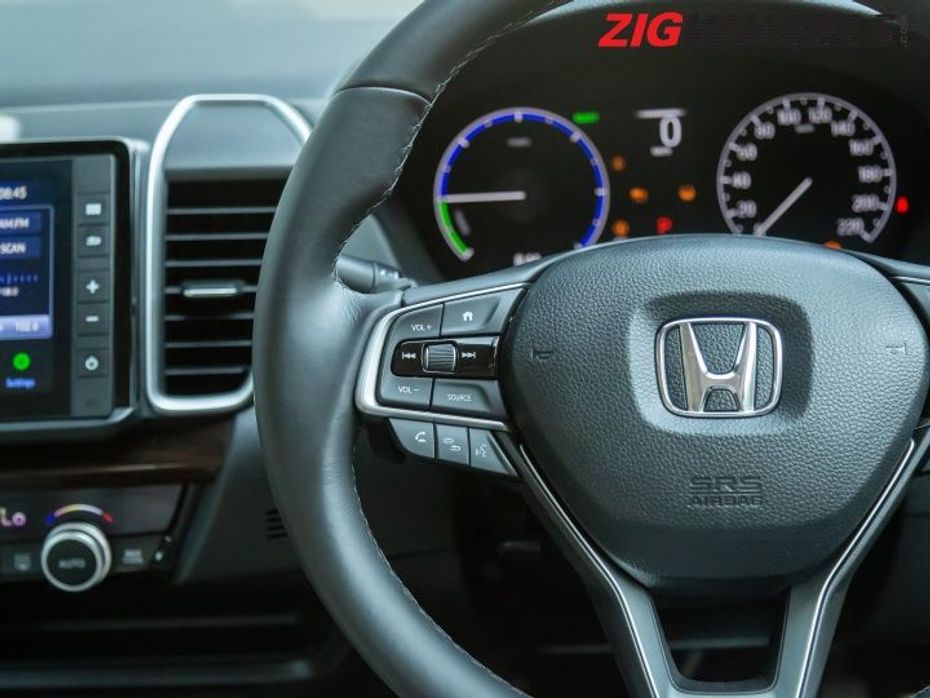
There is a B mode on the drive-selector of the City hybrid which engages a stronger level of regenerative braking to replenish the battery. The paddle shifters behind the wheel allow the driver to select from the three levels of regen-braking on offer, pulling on the (-) paddle to increase the level and the (+) paddle to lower it.
At the normal energy recuperation setting in regular drive mode, the deceleration is quite mild but still noticeable. Moving up to the highest regenerative braking setting using the paddles, the deceleration is comparable to using conventional braking for gradually slowing down from highway speeds.
How efficient is it really?
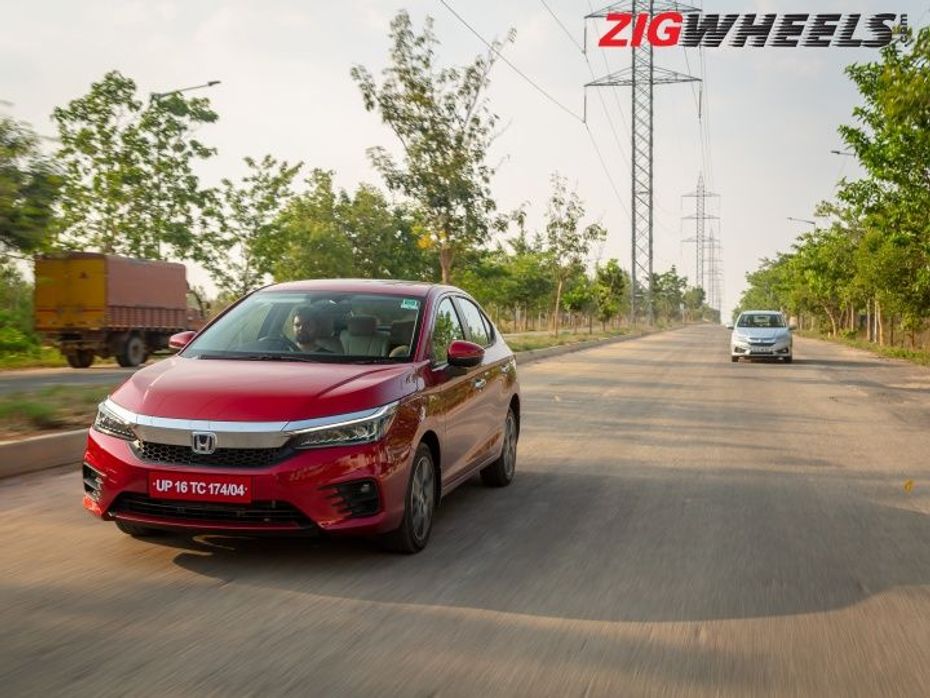
Well, we did not get the chance to put the City e:HEV through our fuel economy test on this occasion. But the certified efficiency figure stands at an impressive 26.5kmpl which is higher than all its segment rivals by a fair margin. That figure is higher than Honda's claimed efficiency for the City's diesel-manual variant at 24.1kmpl and about 7kmpl more efficient than the petrol-CVT powertrain. Even if the City hybrid can achieve 20kmpl in the real world, that would be a higher economy than the claimed figures of its rivals.
Does it get any new features?
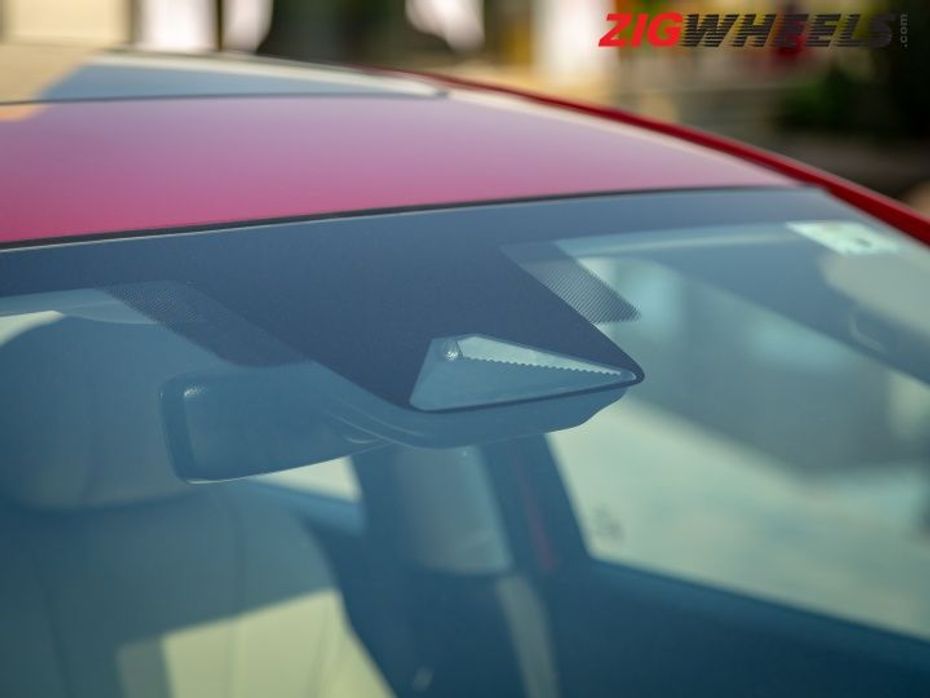
Honda has equipped the new City e:HEV with its ADAS tech suite called Sensing. The features on offer include collision mitigation braking, adaptive cruise control, road departure mitigation, auto high beam assist, and lane-keep assist. We tried out every feature apart from the collision mitigation system which is meant to be a last-second safety measure and not something to experiment with on the road.
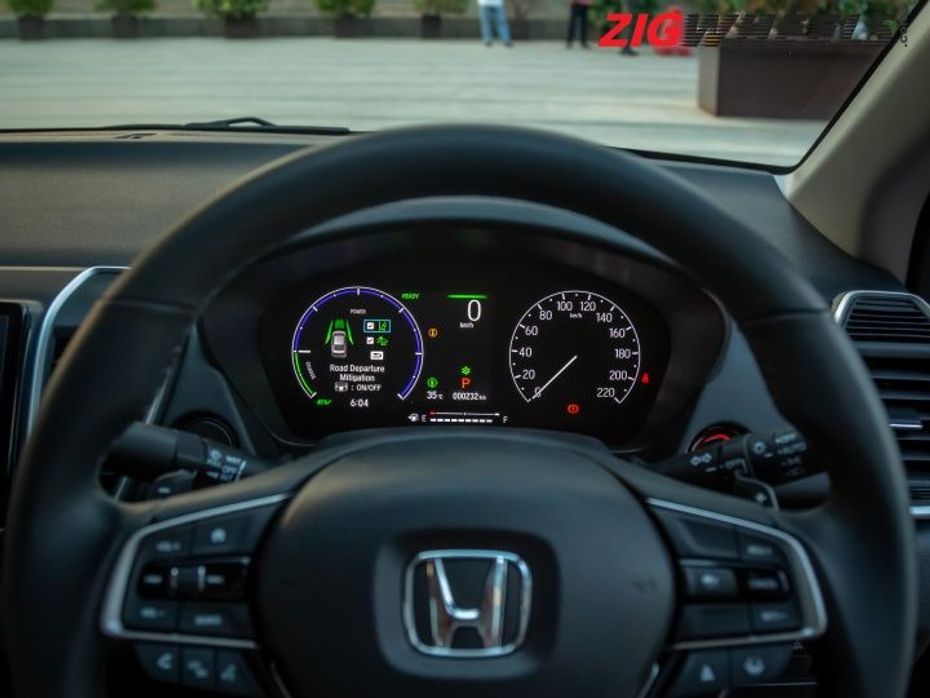
Road departure mitigation detects you drifting across the lane markings on the road, or moving off the tarmac, and gives a tug on the steering wheel to pull you back in the right direction. In Indian driving conditions where you have to cross lanes to dodge the odd obstacle in your path, you might find it slightly intrusive. However, you can disengage this function and CMBS using the hotkey to the right of the steering wheel or from the menu on the driver's display.
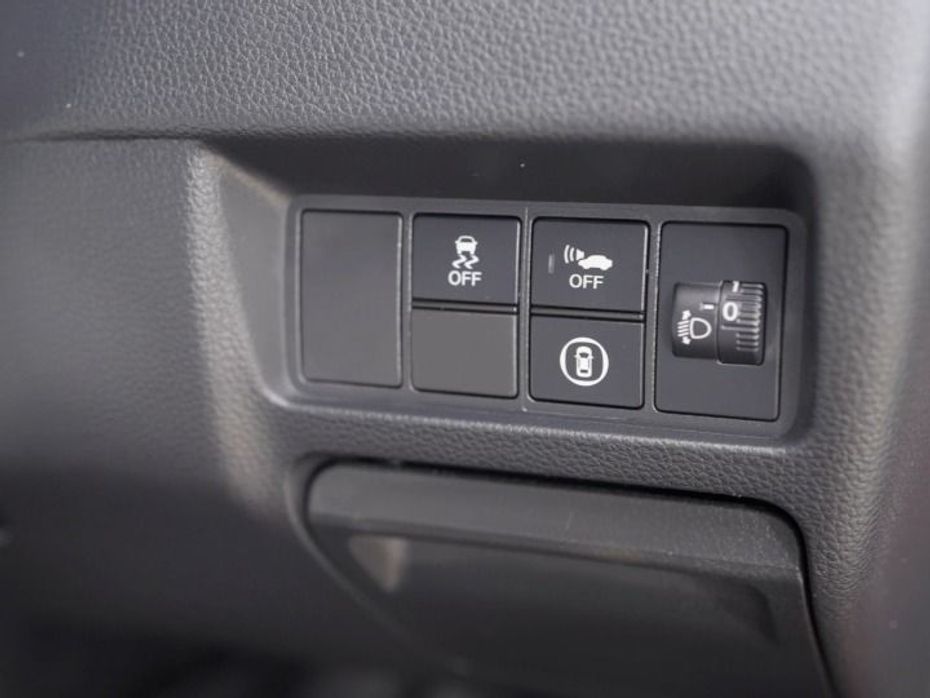
The Lane Keep Assist works at speeds above 82kmph and makes autonomous steering inputs to keep you centered in your lane without having to hold the wheel. It is also capable of following wide bends as detected from the lane markings. However, you do need to grab a hold of the steering wheel once every while since that's the level of driving autonomy allowed today. Combined with the hybrid powertrain, this is the most advanced version of the City you can have.
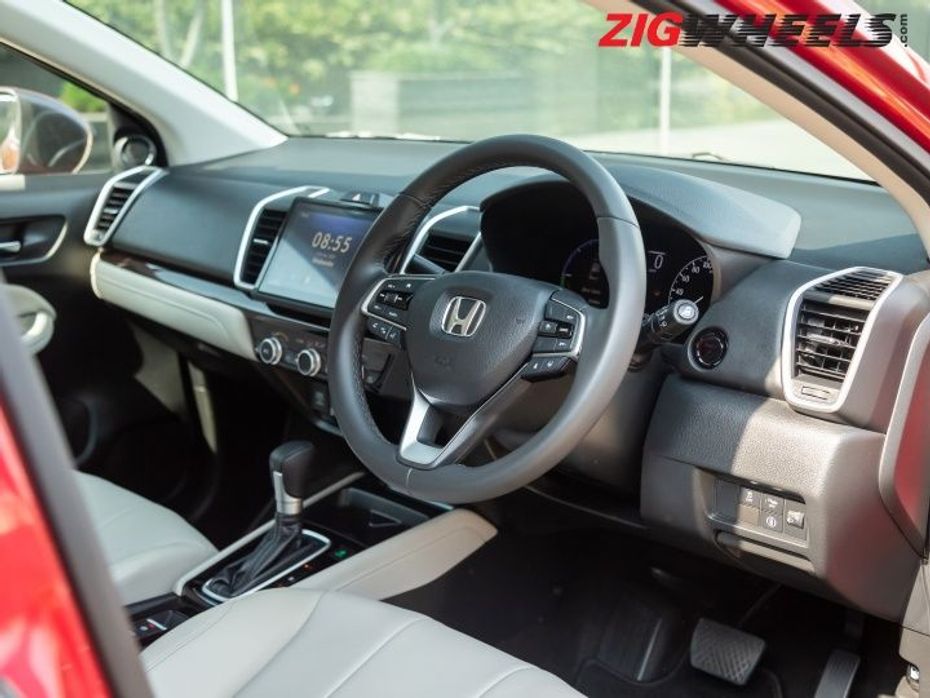
Since the e:HEV is based on the top-spec ZX trim, it already gets all of the City's comforts such as the Lane Watch Camera, 8-inch touchscreen infotainment system, semi-digital driver’s display, connected car tech, and six airbags. However, Honda has added a couple of new features to the hybrid variant other than just ADAS: an electronic parking brake and brake hold assist which stops you from rolling without having to use the brake pedal.
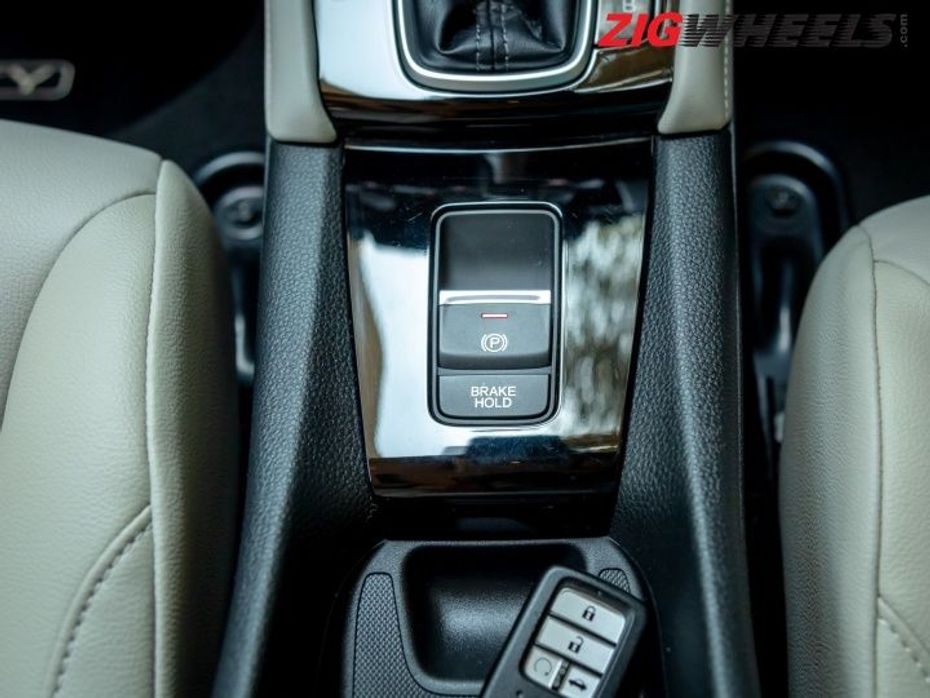
What else is new?
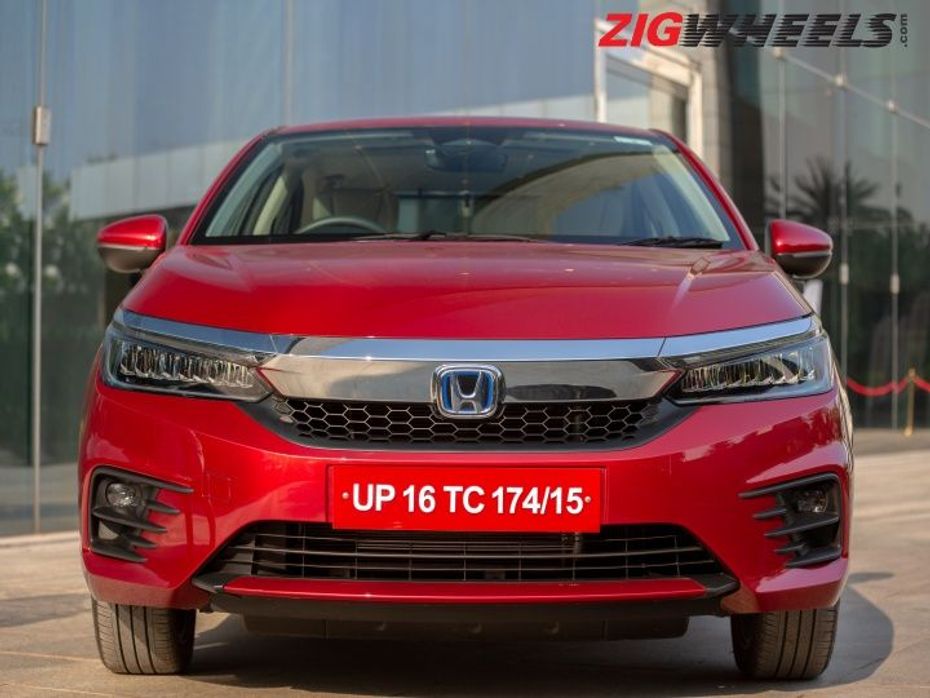
Sadly, not much. The new City e:HEV gets minor cosmetic differences such as the new honeycomb grille, sporty fog lamp housing, a bootlid spoiler, and a rear diffuser with faux carbon fibre. Oh, and the Honda badges on the front and rear have a blue tinge to signify the car's electrified nature. Inside the cabin, you get the ivory and black interior theme over the regular City ZX's beige and black interior.
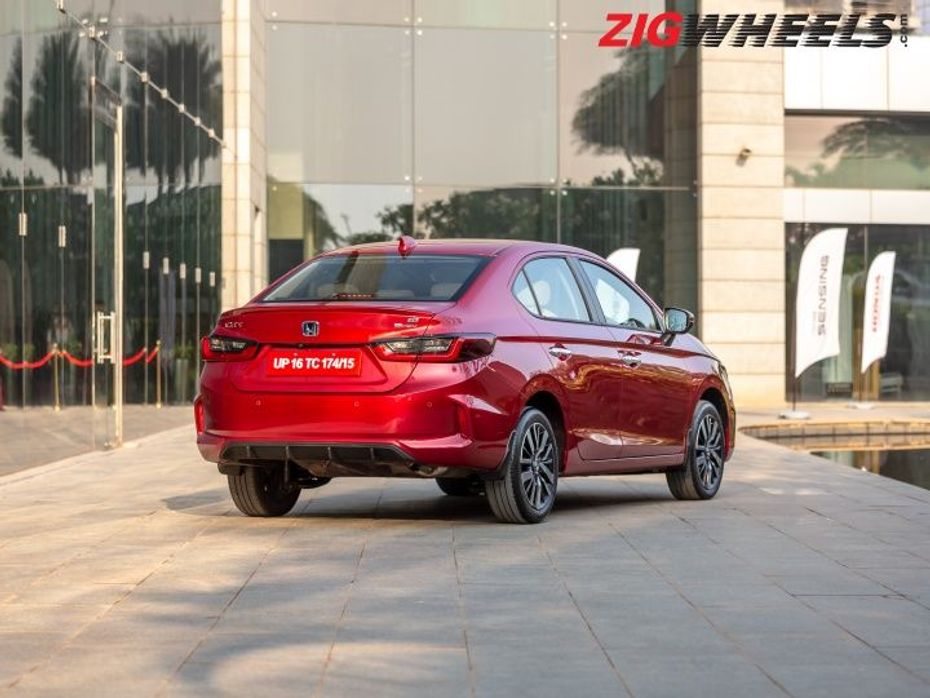
Another difference is the new vent integrated into the backseat, behind the driver’s side, for improved cooling of the battery pack behind it.
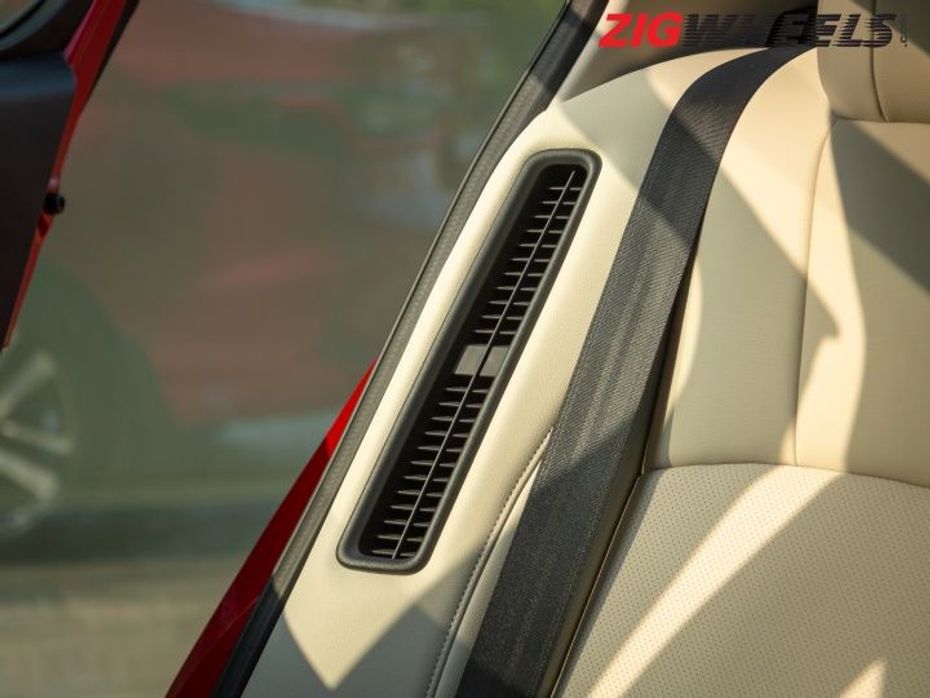
All of these changes are too discrete and can be easily missed by the average person. It makes the City e:HEV feel less special because it looks so much like the regular City. We feel Honda missed a trick by not doing more to celebrate the unique identity of the e:HEV variant. It could have offered it with the choice of a new exterior paint option exclusive to the hybrid trim, a slightly different wheel design, and some visible emblems inside the cabin. Honda did not even make any changes to the key fob design for the City e:HEV.
Any compromises?
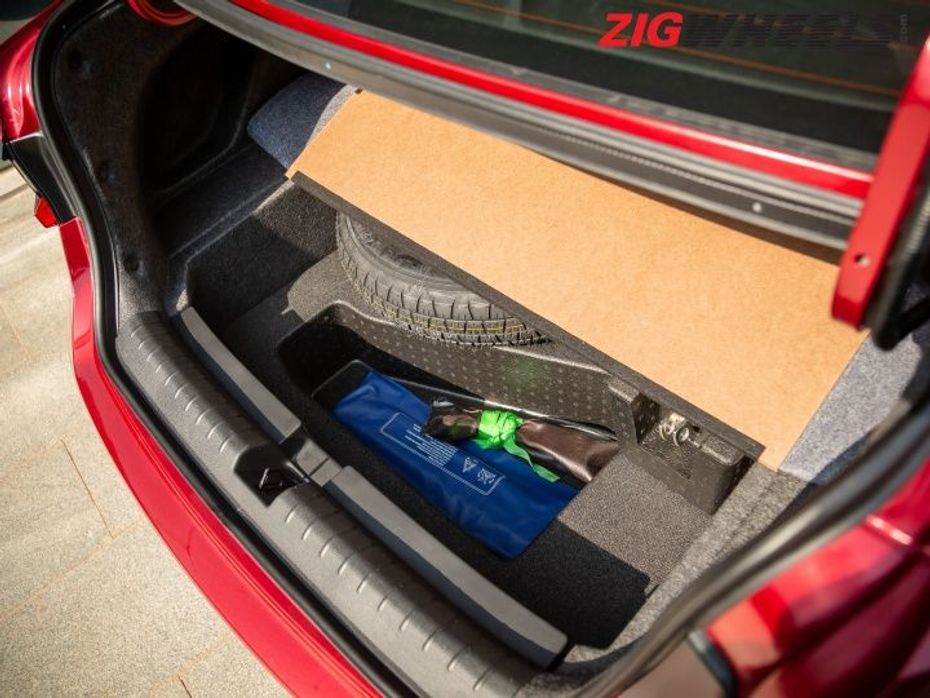
Just a couple. The most noticeable one is the reduced boot space because of the battery located behind the rear seats. Its volume has dropped by 200 litres, from 506 to 306 litres. The hybrid powertrain is quite efficient but it does add 120kg to the kerb weight. While Honda has tuned the suspension to accommodate the extra kilos and offer comfort levels on par with the regular City, one does notice the added weight at higher speeds. However, the ground clearance remains unchanged.
Who should consider buying it?
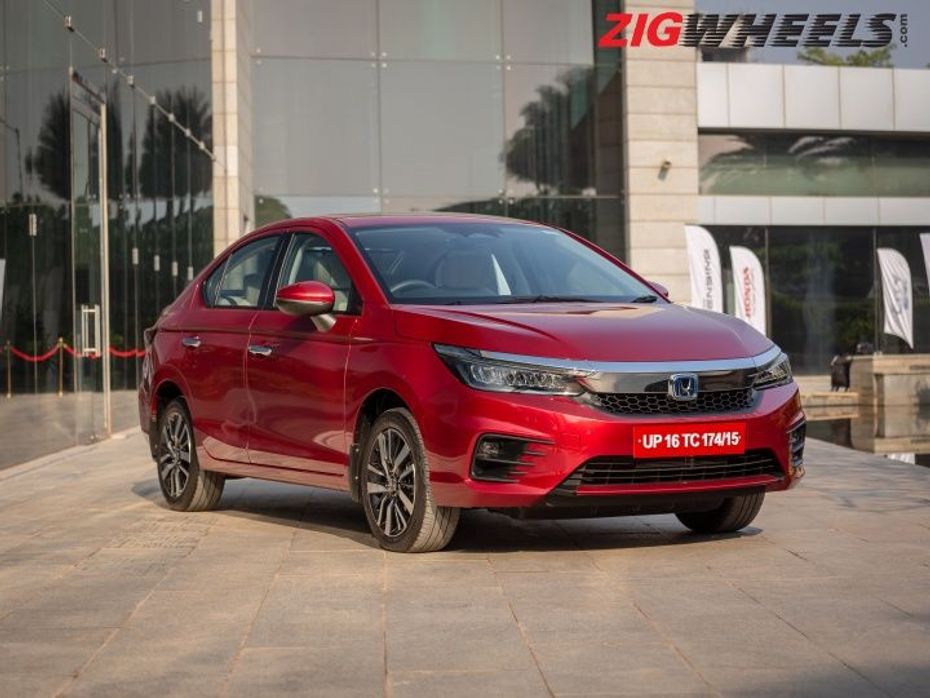
The e:HEV tech of the Honda City hybrid is fascinating and new to this segment. Honda is undoubtedly going to charge a hefty premium for it over the regular top-spec City, maybe something in the area of Rs 5 lakh, taking the ex-showroom price close to the Rs 20 lakh mark. Most of the attention is drawn to its high fuel economy, but it would still take you a long time (up to 10 years) to make up for the price jump with savings on fuel costs.
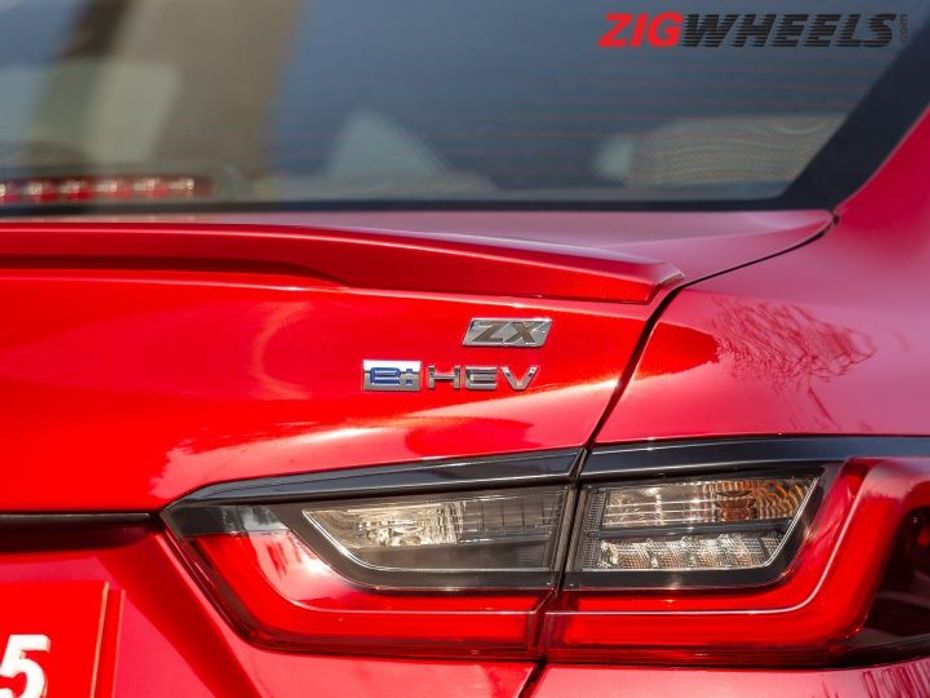
One will not buy the Honda City e:HEV for better value for money or lowering their running costs. It is for those who are eco-conscious but not looking to convert to EVs just yet, either due to a lack of choice in their budget or don’t want the range anxiety due to lack of charging infrastructure. That is where the City hybrid presents itself as a beacon of change, a suitable stepping stone in reducing your carbon footprint while still enjoying the convenience of a petrol vehicle. As an added bonus, it also happens to be quicker than the regular City.
Honda City Hybrid 2022-2023 Video Review
See what our community has to say! NEW
India's largest automotive community









